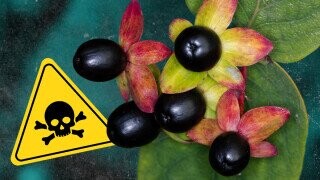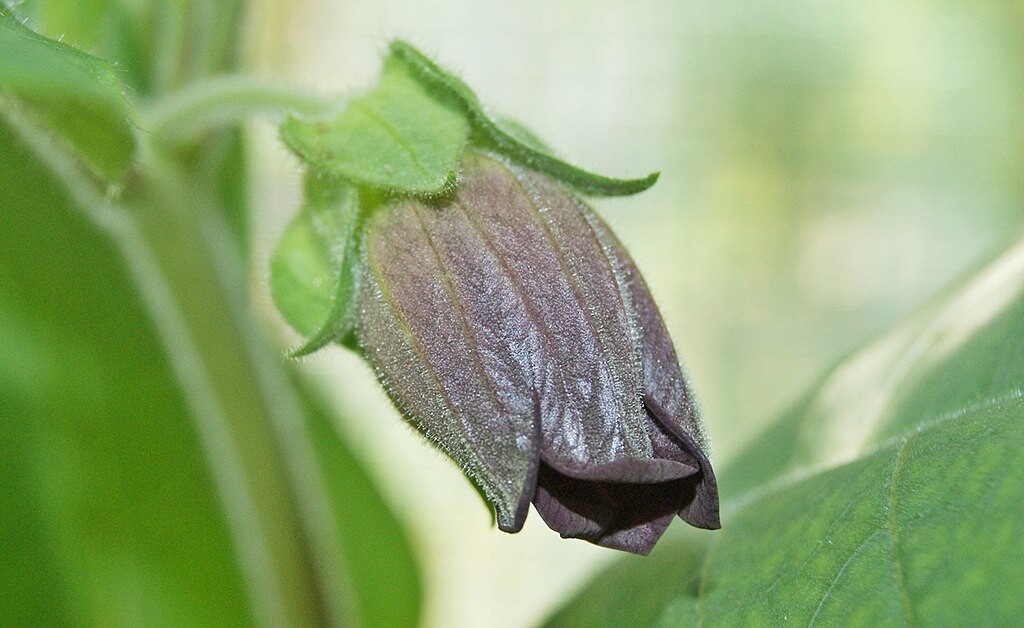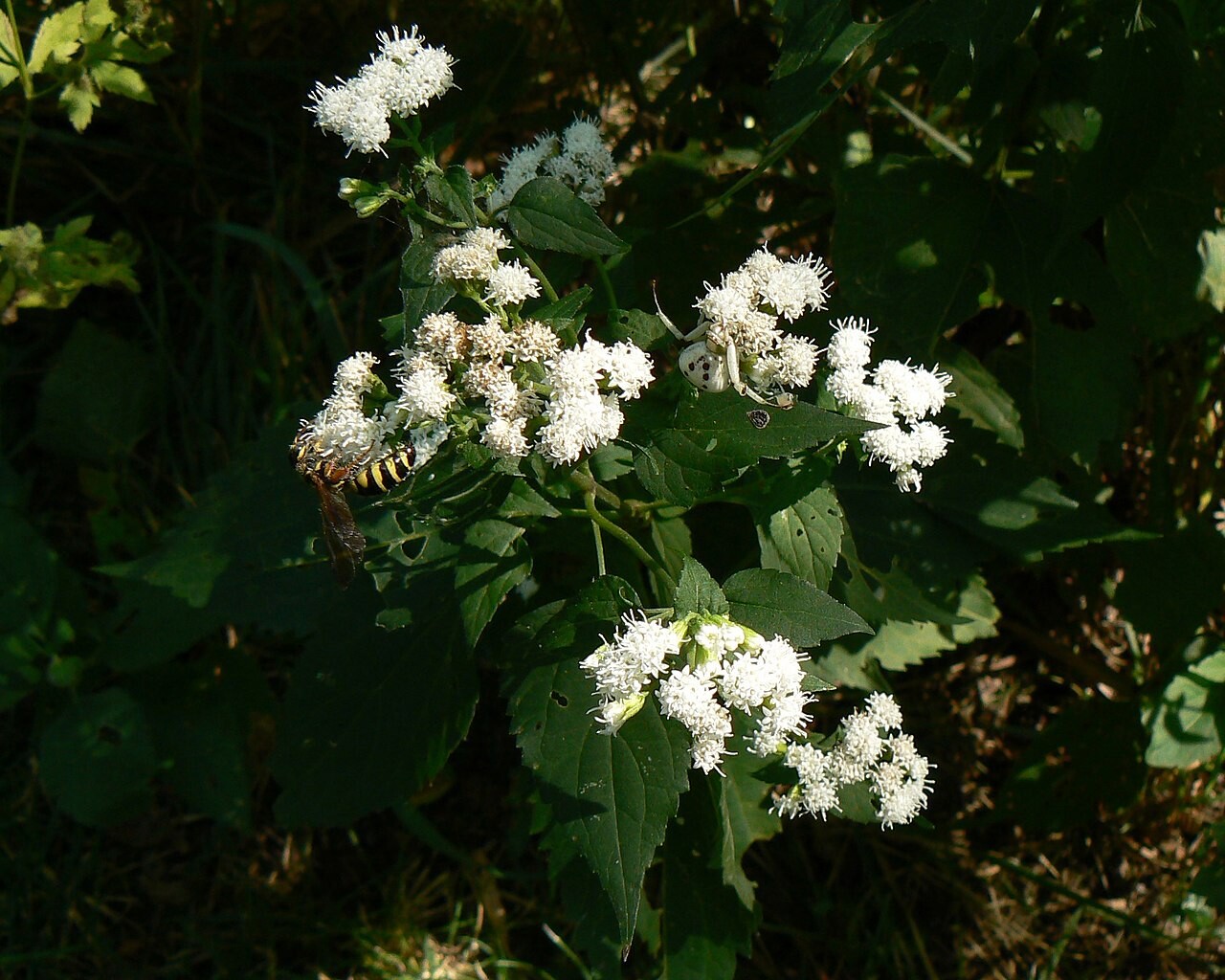Do Not Sniff: 5 Of Nature's Deadliest Flowers

When the world is this dark and uncertain, we need all the reminders we can get that life is, in fact, a beautiful opportunity. What better pick-me-up can there be than the sight of a delicate, colorful flower on a sunny day? A little bit of God’s origami, opening itself up to us to demonstrate the miracle of life on this earth. A present from a planet that continues to give life, even as we constantly beat it with the ecological equivalent of a lead pipe.
Click right here to get the best of Cracked sent to your inbox.
But then, because nothing can ever be that straightforward, there’s still a couple nasty exceptions, little flowers that might look lovely but have the capacity to send you straight into a box made of their piney tree cousins. They may have developed these deadly defense mechanisms to deter predators, or to kill hippies. Science can never truly know. What we do know for sure is that these little cuties will wreak havoc on your internal organs in a uniquely irreparable way. Their majesty only serves to distract you as you die a horrible death, like a glorious bald eagle soaring into your head to excavate its softest holes.
Don't Miss
Here are 5 flowers that are pretty deadly.
Oleander

Oleander presents itself in a gorgeous shade of pink that might make you consider including it in a Mother’s Day bouquet. This, however, would be highly inadvisable unless you’re trying to commit a very poetic-feeling instance of matricide. Like many objects, the worst thing you could do when experiencing oleander is to try to eat it. Even just a nibble. Ingesting one single solitary leaf from the oleander plant can be fatal to an adult human. You’ll be stricken with nausea and vomiting, and your pulse will raise before your heart eventually slows to a very unhealthy zero beats per minute.
Even if you’re in control of your compulsive teething, though, you’re not safe. Just touching oleander plants, and coming into contact with their sap can cause serious skin irritation and inflammation. Now, if you’ve realized you’ve got a heap of oleander in your garden and you want to get rid of it, make sure not to burn it, as it’s so poisonous that even the smoke can inflame your eyes and lungs, two body parts you generally want in perfect working order.
Nightshade

One of the stalwarts of anyone in literature looking to commit murder most foul is deadly nightshade, or belladonna. It’s another massively toxic plant that commits highly dickish behavior by not only sprouting attractive flowers, but even berries containing the same trademark poison. How dare you pervert the delicious berry, the skittle of nature? As far as toxicity, its leaves match oleander, with one being enough to kill an adult. The berries aren’t quite as toxic but still definitively bad eats, with only a couple killing a child, and 10-20 killing an adult.
As far as touch – though it wouldn’t be recommended to give the plant a grab in any case, if you’re unlucky enough to do so with an open wound, your next stop should be a good estate lawyer. Now, some of you might be remembering belladonna used as medicine in the past, and wondering how that was ever a good idea. The answer is it wasn’t, because old doctors were very, very dumb. People even used it as anesthesia, which worked because somebody gets pretty drowsy when they’re half-poisoned.
Monkshood

There seems to be a pattern of poisonous flowers coming in shades of pink and purple, which apparently is a color combo that nature thinks effectively communicates danger instead of being extremely cool. According to nature, a Lisa Frank sticker should be one of the most poisonous items in existence. Monkshood is also known as wolfsbane, but maybe a more accurate name would be everybodybane, because it’s not like it contains some wolf-specific poison.
Monkshood is packed with both heart AND nerve poison, which is what you call value. Despite this, and in further support of the deep shortcomings of human intelligence, it’s still showing up as an herbal remedy for, of all things, anxiety. Not sure how drinking a very poisonous tea is supposed to make you feel safe, but do you. Once it’s ingested, it can throw your heart out of rhythm and can be very difficult to counteract. Doctors say that it can take seven different types of medicine to correct the arrhythmia it causes.
Angel’s Trumpet

Another colorful killer is the angel’s trumpet, and this one has chosen to focus its poison heavily in the flower itself. It comes in a Crayola-ready variety of shades, all of which will absolutely fuck your shit up. I would assume their name comes from their delicate shape, but it could also serve as a warning that if you consume one, the denizens of the pearly gates are announcing your arrival post-haste.
Eating it is obviously the quickest way to get yourself poisoned, but it’s also common that gardeners who’ve been handling the plants either then touch food or their eyes with contaminated hands. It goes straight for your nervous system, and can cause blurred vision, memory loss, abnormal behavior and hallucinations. Could be a fun Saturday night if not for the whole dead on Sunday morning thing.
White Snakeroot

The other plants on this list are plenty deadly, but they do at least have one safety precaution going for them, which is that you probably have to come within knowing contact to actually get poisoned by them. White snakeroot has a particularly sneaky trait, though, and one that might have in fact affected history. This is that white snakeroot is often eaten by unassuming cows, and the poison is actually able to be transmitted through their milk in strong enough concentrations to affect humans who drink it, known as “milk sickness.”
If you’re unlucky enough to throw back a batch of snakerooted cow milk, you’ll be hit with nausea, reddened tongue, and the particularly unpleasant sounding symptom of “acidity of the blood.” If you’re really going to town on a jug or two, it could end in convulsions or a coma. One of the most famous people in history can attest to its danger: Abraham Lincoln, whose mother died from milk-borne snakeroot poisoning.